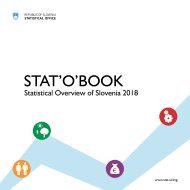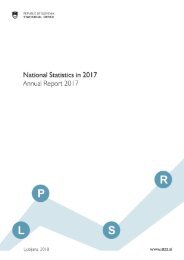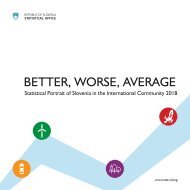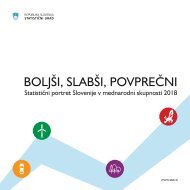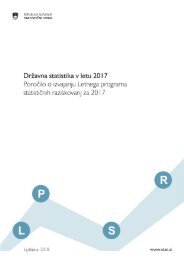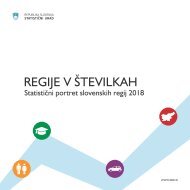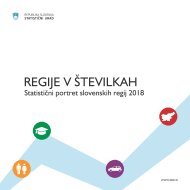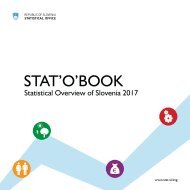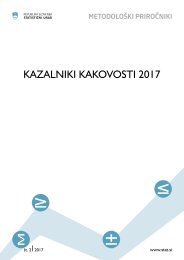quality-indicators-2017
Create successful ePaper yourself
Turn your PDF publications into a flip-book with our unique Google optimized e-Paper software.
QUALITY INDICATORS <strong>2017</strong><br />
4.1.2 Overcoverage rate<br />
With regard to the definition in Section 3.7, the overcoverage rate is equal to the rate of ineligible units in the<br />
frame. If we wish to apply such definition also to register-based surveys, we first need to assume that the entire<br />
procedure is implemented in such a manner that the referential set of observation units (the frame) to which<br />
data from heterogeneous sources are linked is defined at the beginning. In this case as well as for the definition<br />
of <strong>indicators</strong> described in the following sections, we assume the situation presented in the following figure:<br />
Figure 4.2: Process of integration of heterogeneous sources<br />
Data sources<br />
…<br />
Frame<br />
Integration<br />
Complete and<br />
partial data<br />
No data –<br />
eligible<br />
No data –<br />
ineligible<br />
F<br />
r<br />
a<br />
m<br />
e<br />
Units for which we were not able to obtain the required data can thus also here be divided into eligible and<br />
ineligible units, and then the rate can be calculated according to the same procedures as described in Section<br />
3.5. The problem, however, is how to identify such ineligible units because in field surveys such information is<br />
usually obtained from the field, while in this case there is no such contact, or (in combined surveys) the contact<br />
is rather limited. We therefore usually need to use information from other surveys or use additional<br />
administrative sources.<br />
4.1.3 Imputation rate<br />
As presented in the above figure, in the phase of data integration not all units are linked for all variables (see<br />
Section 3.8); in this case, too, we face a problem that corresponds to the problem of unit non-response and item<br />
non-response in field surveys. Moreover, in particular in the integration of several heterogeneous sources, there<br />
is a high probability that inconsistent records might be created. In register-based surveys, all of the above<br />
creates the need for different imputation methods to be used for the estimate of unavailable data, or the<br />
estimate for inconsistent data replacement. By using these methods, the value of the indicator is then calculated<br />
according to the same procedure as described in 3.8.<br />
4.1.4 Editing rate<br />
Data validation and data editing are procedures to be implemented in field surveys as well as in register-based<br />
and combined surveys. A specific characteristic of register-based surveys (regarding editing) is that editing<br />
procedures may be carried out on an individual source (prior to integration) or on an already linked data set<br />
(after integration). In calculating the indicator value, we need to consider corrections made prior to and after<br />
integration. In short, we take into consideration any correction made during the survey in question. On the other<br />
hand, we should not take into account those changes to data that have been made outside the scope of the<br />
survey, those undertaken by the data administrator at the SURS, or those undertaken by an external institution.<br />
28





